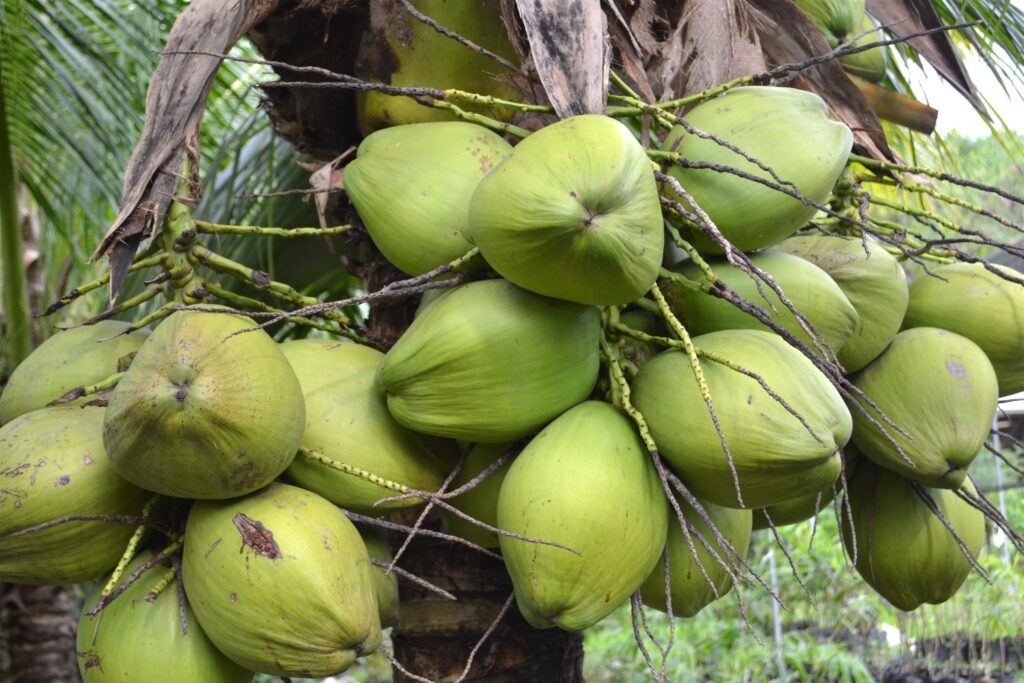GOING LOCO OVER COCO (FIRST OF TWO PARTS)
Text and Photos by Henrylito D. Tacio
(First of Two Parts)
Going loco over coco (First of Two Parts). Although not a native of the Philippines, coconut can be considered as God’s gift to Filipinos. It is called the “tree of life,” a moniker that couldn’t be truer in the country where the coconut industry provides a livelihood for one-third of the total population, according to data from the Philippine Coconut Authority (PCA).
The UN Food and Agriculture Organization (FAO) reports coconut production in the Philippines grew at the rate of 5.3% per year from 1911 to 1929. It increased by 5.2% from 1952 to 1966.
Today, the Philippines is the world’s second largest producer of coconut products – after Indonesia. Some 3.562 million hectares of coconut trees are planted all over the country, dominating the landscape in 69 out of the total 80 provinces.
Historically, the Southern Tagalog and Bicol regions of Luzon and the Eastern Visayas were the centers of coconut production. But in the 1980s, Western Mindanao and Southern Mindanao also became important coconut-growing regions.
“(Coconut) provides vital economic support to the rural communities, with over 3.4 million farmers directly benefiting from the industry,” reports the Laguna-based Philippine Council for Agriculture, Aquatic, and Natural Resources Research and Development (PCAARRD).

While the coconut industry is touted as “the lifeblood of the Philippine agriculture,” it is not given much attention in recent years. In fact, the country’s coconut production and productivity are both declining.
One of the reasons cited is that most of the coconut trees grown in the country are now very old. More than 44 million coconut trees are at least 60 years old, studies showed. One lawmaker said that 15 out of every 100 coconut trees are “past retirement age.”
The PCA and other government agencies are urging Filipinos to plant more coconuts in their farms. And by planting more coconuts, the Philippines can also help stave off the effects of climate change. “These coconut lands could be developed for income generating carbon sequestration projects and the carbon credit market,” pointed out PCA’s Severino S. Magat.
Carbon sequestration describes long-term storage of carbon dioxide or other forms of carbon to either mitigate or defer global warming and avoid dangerous climate change. Carbon dioxide, in the form of gas, can be sequestered out of the atmosphere through photosynthesis. The carbon dioxide is converted into sugar by the plant or emitted back to the air through perspiration.
Carbon stored in plant parts other than the stem wood or trunk are generally decomposable biomass which eventually becomes a part of the soil organic matter (SOM) of which the more stable component is the 50 percent soil organic carbon (SOC).
In his paper presentation entitled, “Productive and Sustainable Coconut Farming Ecosystems as Potential Carbon Sinks in Climate Change Minimization: A Review and Advisory Notes,” Magat explained the important role of the coconut lands against the negative impacts of climate change.
In coconut, as in most tree crops, carbon is stored or sequestered both by the biomass and the soil of the ecosystem, indicating that the biomass and the soil are the main carbon sinks of atmospheric carbon dioxide. These “carbon sinks” could be regulated and managed to a great extent by following proper cropping practices, according to Magat.
A two-year study conducted by PCA showed the annual rate of carbon sequestration in local tall variety coconut crops is 4.78 tons carbon per hectare. That is equivalent to 17.54 tons of carbon dioxide per hectare, Magat claimed.
Unknowingly, coconut (scientific name: Cocos nucifera) is not a nut but a fruit. One of the oldest references to coconut is that of an Egyptian traveler who, in 545 A.D., wrote about a “nut of India” and sometimes as the “Indian nut.” Both the Spanish and Portuguese reported coconut in normal use as food in the Caribbean area previous to 1526. Later, in 1577 during a visit to Cape Verde Island, Sir Francis Drake frequently referred to the vast quantities available of “nargil,” the prevailing name of coconut.
It was not until 1775 that nargil was dropped and the word coconut became general in use. The name coco means “bugbear” or “hobgoblin” because of the grotesque face or mask of the shell.
Most coconut grows on beaches of tropical islands. Here’s one legend from eastern Papua about the origin of coconut. Each day a man came home in the evening with a basket filled with large fish. Naturally, the villagers went to spy on him, to find out how he was so successful. At dawn, the man removed his head, placed it under a shrub, and then waded out into the ocean, where the fish would be attracted to him and be swallowed through his neck.
According to the legend, the man spewed out the many fish on shore, placed his head on again, then sorted the fish to return the small ones to the water. Then next morning the jealous onlookers stole the man’s head and hid it in the sand. When he could not find his head, the man changed into a fish and swam away, but his head subsequently grew into a coconut tree. (To be concluded)

